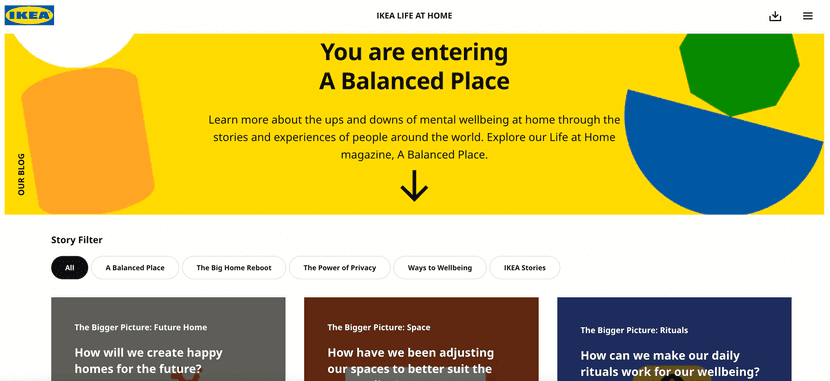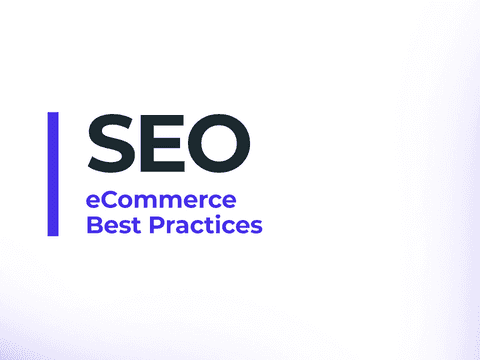If you are an online retailer, you probably already know the importance of eCommerce marketing for the success of your business.
If you don’t already know, learn what exactly eCommerce marketing is, implement the best digital marketing strategies for online stores in 2022 and decide what type of eCommerce marketing you want to carry out.
What is eCommerce marketing?
eCommerce marketing encompasses all activities related to the promotion of an eCommerce store. The best eCommerce marketing strategies include online and offline marketing actions to attract customers, create engagement, and increase conversion and retention.
In this way, eCommerce marketing aims to promote sales throughout the customer journey. There’s not only one “right” way to do eCommerce marketing, and there are many types of eCommerce marketing that can be used in your digital marketing strategy.
TOP 6 eCommerce marketing strategies
These 6 tips will help you create a marketing plan that sets you up for success.
1. Define your target audience and market
The first step to creating a digital marketing strategy that works for your eCommerce business is knowing who your customers are, why they like your products and brand, what their problems and needs are, and how you can solve them and so on.
For this, you’ll need to conduct research to create the buyer persona (or personas) for your brand.
2. See what your competitors are doing
Now that you know your brand’s strengths and weaknesses and why your customers chose you, it’s time to discover the weaknesses and strengths of your competitors! Plus, learn how you can not only keep your current customers, but maybe even steal some from your competition!
You can go as far as making a purchase from the competing online store to see the quality of their services, from website design to pricing strategy, packaging, shipping methods, delivery times, and post-sales features & services such as support or discounts.
3. Add any marketing channel that aligns with your audience
After you have designed your buyer persona, it will be easier to figure out the best channels to market your products, attract your customers, engage with them, encourage conversions, and develop a marketing plan to build loyalty.
Some of the most frequently used channels are social media platforms such as Facebook and Instagram, but you can also run more traditional marketing campaigns on TV, in magazines, etc.
4. Personalize your communication
As we mentioned before, branding is extremely important for the success of a digital marketing strategy. This also applies to the communication and messages you exchange with your customers.
For instance, if you offer personalized advice and communications to your customers, they will perceive your online store’s customer service as high-quality. This can help your eCommerce store gain loyal customers and boost the repurchase rate.
Cross-sell and upsell your products with retargeting strategies
Another way you can personalize your communications with customers is by offering them products related to what they have already bought. However, cross-selling and upselling is only possible if you have a history of their purchases and other information such as visited products, returns, etc.
Set up cart recovery campaigns
For customers that left your website without making an order, but did select some products and added them to their shopping cart, you can send recovery emails —or other types of messages— to increase conversion rates and lower your cart abandonment rate.
For this, you will also need to keep track of abandoned carts and have a database with customers’ information to contact them. In the email, you can include the contents of their shopping cart and even a special discount to promote a faster sale.
5. Encourage customer loyalty with rewards
Once your digital marketing strategy has started to work, it’s time to reward loyal customers who keep coming back for more.
This can be done in several ways: you can offer special discounts for a limited time, or create a loyalty program to reward customers with points that can be redeemed for free shipping, discounts, or free products.
6. Measure your eCommerce marketing results; refine and reuse what works
Implementing marketing strategies in your eCommerce store is useless unless you track, measure, and improve your current marketing plan to solve & meet customers’ needs and preferences.
At the end of the day, there’s nothing more important than their satisfaction since this is what will be reflected in your store’s results. Whether successful or not, to see the results of your eCommerce marketing plan, you’ll need to establish the most important KPIs for your online store.
Some of the most frequently used KPIs in eCommerce are the conversion rate, the bounce rate, the repurchase rate, and the number of returns.
Types of eCommerce marketing
There are many types of eCommerce marketing that can be used by online shops. Some of them imply more time, while others require a bigger financial investment. These are some of the most-used types of digital marketing approaches chosen by online shops.
Social media marketing
This approach is seen more than usual nowadays. If the buyer persona of your online shop shows a clear tendency to engage on social media platforms, your company should create a profile on the most-used platforms of your customers.
Some of the most common social media marketing tools involve social media platforms such as Facebook, Instagram, or YouTube, but social media marketing can also refer to podcasting or sending personalized emails and other types of digital communications to buyers or potential customers.

Social media marketing can be carried out in-house or outsourced, and can be “free” or done through a paid version with a PPC (pay-per-click) campaign on Facebook and Instagram, or by creating a YouTube Ad.
Influencer marketing
This approach is somewhat related to social media marketing. Remember when we said that it could be outsourced?
While the online shop should control the message, influencers play an important role in current trends and can be used to promote products on social media —and even more traditional channels, like TV. While influencers are abundant online, they can cost you a lot (especially the few that are on TV).
Instead, choose those influencers that have a smaller niche but very loyal followers and make sure that their followers align with your product and vision.
Influencers can be compensated through products, a commission, or a fixed amount per campaign. This campaign can consist of Instagram stories, Instagram posts, Facebook publications, YouTube videos, or TV ads. The possibilities are endless. Generally speaking, they are carried out online.
Affiliate marketing
Similar to influencer marketing is affiliate marketing. In fact, these two types of marketing can be combined. It solely depends on the contract you decide to have with the influencer or your affiliate representative.
Through affiliate marketing, the brand ambassador shares a link that will earn them a commission on the sale. In this way, online shops can increase sales while the affiliate receives compensation for the promotion of your company.
Content marketing
eCommerce shops can use content to promote their products or vision in several ways. More frequently, they choose to concentrate their efforts on visual content for social media.
However, if your niche is very specific and your brand philosophy allows you to create written content, it is an opportunity to add value to your existing customers and attract potential customers organically.
For instance, the brand Alo Yoga provides yoga videos on Youtube. There’s also Ikea’s blog which shares videos on lifestyle and decor.

This can help the SEO strategy of a brand whilst bringing valuable traffic to the website, and potentially work as an attraction, engagement, and loyalty channel.
Additionally, you can also carry out a link-building campaign to strengthen your content marketing strategy with third-party traffic. For instance, this can be done organically or through an advertising campaign when you carry out an influencer marketing campaign through a blog post on another website.
Viral marketing campaigns
We know this is easier said than done. However, viral marketing campaigns can play in your favour if you attract people who have a high potential of becoming loyal customers to your brand.
For this, it’s extremely important to include your strengths in the marketing campaign and to stick to your values. Selling a completely different version of your business will only mean a few gains in the short run. This boost in sales could be better seized by attracting an audience that aligns with your values and products, obtaining customers with a higher repurchase ratio.
Some key elements of creating a viral marketing campaign are to be original, loyal to your brand, and represent an ongoing trend or issue.
eCommerce advertising
This section refers to all actions that involve the payment for an eCommerce marketing campaign. It can mean an influencer marketing campaign, Google Ads, promoted content on social media platforms, or affiliate links.
Taking a step back from the online digital marketing strategy, eCommerce advertising can also be done via more traditional channels such as TV, magazines (could also be online magazines), billboards, etc.
Local marketing
If your online shop has a presence in the physical retail sector, you can carry out a local marketing campaign to attract those customers that are within a reasonable radius of your physical shops.
If your business solely operates online, local marketing will only make sense if you orient it to those areas where you can offer special shipping conditions, let it be delivery times or reduced shipping rates.
Local marketing, like any other marketing idea, won’t make sense for every business out there, but it’s worth mentioning.
Website optimization
A curated and functional website design can also be used as a marketing tool to attract customers and convert them into loyal buyers.
You may have already taken care of the web design of your online shop, but there might still be some features that could be included to improve the UX of your website when it comes to sales.
For instance, you can create a wishlist section along the top bar of your website to allow customers to save products that are out of stock or at a price they are not willing to pay. This way, customers can choose to make the purchase once the item is available or has a lower price point, converting sales faster than if they were to look for the item in your product catalog.
You can also:
- Include reviews on your product pages to show other customers’ opinions on the item
- Create a newsletter to notify customers when there’s a discount, or special promotion or event
- Design pop-ups to remind shoppers of ongoing promotions or discounts
- Implement filters to classify products in the catalog, allowing customers to find what they are looking for faster
If your customers show an inclination to mobile devices and social media platforms, you should also make sure that your website design is mobile-friendly. You may be losing opportunities for conversion if it isn’t.
eCommerce branding
Lastly, consider eCommerce branding all throughout your operations. Everything from website design to product pages, packaging, and communications represents your brand.
The way you communicate with your customers and the portrait of your brand can work as a marketing tool that either benefits or harms your business.

Depending on your business strategy and the type of buyer persona you have, you’ll need to have a more casual branding tone or be more serious in your communications with your customers.
Reminder: communication isn't only words, but colors, forms, fonts, and sensations.
eCommerce marketing plan: How to do it with Outvio
You have discovered our tips to create the best marketing strategy for your online store and you also know all the types of eCommerce marketing types that exist.
How can you create your eCommerce marketing strategy more efficiently? Use tools to automate processes, edit and store customer and business information, and ease communication with customers.
Outvio enables you to centralize all post-checkout processes in a single interface, drastically reducing your work times. Its functionalities are specially designed for eCommerce stores with a customer-centric vision.
Bring their purchasing experience to the next level while you minimize errors and reduce logistic & shipping costs.
Outvio positively impacts the performance of online shops from day one. Start using Outvio for free
FAQs about eCommerce marketing
Important eCommerce marketing terms
What is ROI?
ROI is an acronym for “return on investment”. This concept is used to describe the result of this formula: profits - cost ÷ cost. The ROI formula helps businesses measure the monetary value of an investment versus its cost.
What is a (buyer) persona?
A buyer persona is a detailed description of the ideal audience a company seeks to attract. This persona is fictional but should be created based on research of your existing or desired target. Buyer personas can also be called customer persona, audience persona, or marketing persona.
What is a KPI?
A KPI (key performance indicator) is a measurable goal that a company seeks to achieve. KPIs give valuable information about the performance of the team or the success of marketing or sales strategies, for example. They can be used in the decision-making process and in the analysis of past actions.
What is ROAS?
ROAS (return on ad spend) is a common KPI used by online and offline retailers that perform a paid marketing strategy. The ROAS metric refers to the amount of revenue that is earned for every euro spent on a campaign.
What is a typical average online marketing ROI in eCommerce?
eCommerce stores tend to have an ROI of around €2.50 for every €1 invested, on average. However, this can change depending on factors like location, sector, or channel used for the marketing campaign.
How is email marketing done for eCommerce?
The easiest way to do email marketing as an online shop is to use an email marketing automation tool like Outvio. By doing this, you can automatically send personalized emails to your customers and check the open rate and clicks that were gained with every email, using that information to adjust them to the needs and preferences of your buyers.
Summary
After reading what eCommerce marketing is, the types of strategies and approaches that you can choose for your digital marketing plan, and discovering the 6 infallible tips for creating the perfect marketing plan, it will be easier for you to attract customers, engage with them, increase your store’s conversion rate, and build loyalty to create a community of repeat customers that work as brand ambassadors for your business.




